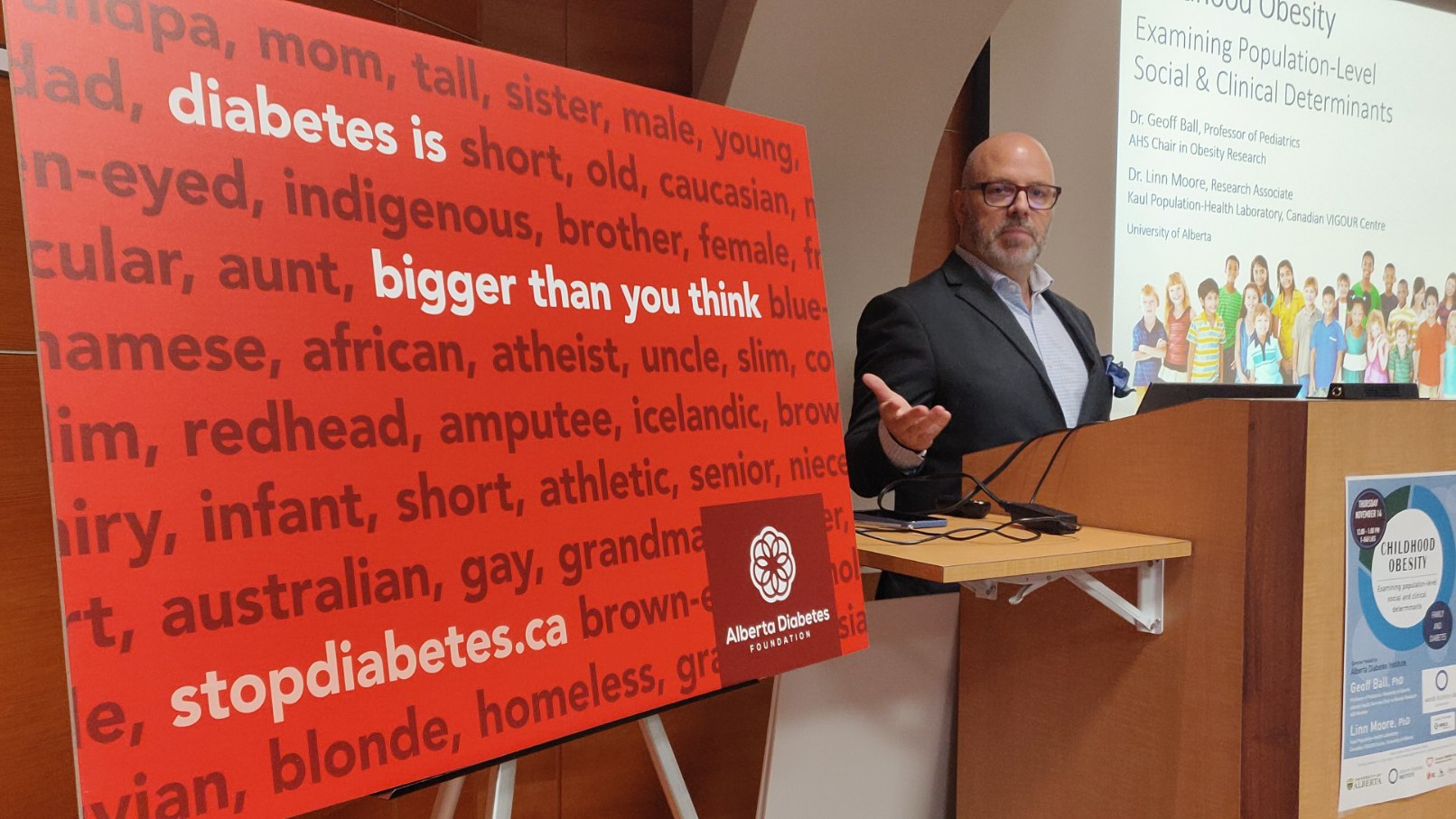
Brad Fournier, executive director of the Alberta Diabetes Foundation, has announced funding for three U of A projects advancing the fight against Type 1 diabetes.
Three University of Alberta research projects are advancing the fight against Type 1 diabetes thanks to new grant funding from the Alberta Diabetes Foundation (ADF).
The projects are approaching Type 1 diabetes from multiple angles. These include efforts to program stem cells to shield them from autoimmune attack, improving the functionality of islet transplantations and looking for new methods to better preserve insulin producing cells.
"I love the scope of research these projects cover," said Brad Fournier, executive director of the ADF. "The research inspires real hope that the needle is moving and families can feel hope that work is underway that will change people's lives."
ADF announced on Nov. 14-World Diabetes Day-that it is contributing approximately $300,000 to four projects over the coming year. Three of the projects will be led by scientists who are members of the Alberta Diabetes Institute (ADI) at the U of A.
-
James Shapiro (Surgery) and his lab aim to reprogram stem cells generated from the Type 1 diabetes patient's own body into beta cells that are both insulin-producing and shielded from autoimmune attack. If successful, the recipient could theoretically be cured of diabetes using their own cells. Because the procedure would not require anti-rejection drugs, it could also mean that people living with diabetes could potentially live an injection-free life.
-
Andrew Pepper (Surgery) hopes to create a better version of the Edmonton Protocol-the groundbreaking procedure that uses islet cell transplants to make it so that Type 1 diabetes patients no longer require insulin, or require much less of it to manage their blood sugars. A major issue with islet transplantation is that up to 50 per cent of the islets being transplanted are lost within the first few days post-transplant. The cells are only available from pancreas donors, greatly limiting the number of transplants that can be performed. Through his research, Pepper will examine a mechanism of islet cell death with the aim of stopping the process. If successful, it could mean fewer donor pancreases are required per transplant, meaning more people would be able to receive the procedure.
-
Jean Buteau (Faculty of Agricultural, Life & Environmental Sciences) and Gina Rayat (Surgery) are working on ways to preserve insulin-producing beta cells from autoimmune attack in people living with Type 1 diabetes. Patients continue to produce islets and insulin-producing cells throughout their lives, but the cells are killed off soon after being made. The researchers are examining a drug, already in clinical trials, which could possibly assist people with Type 1 diabetes in regenerating their own beta cells and producing enough insulin to live a healthy life.
"Each of those could easily be multimillion-dollar streams of research and we are working with the University of Alberta to get that support and hasten the speed of research," said Fournier. "We know that this work is extremely complex and could take years to see through, but the rewards are potentially extraordinary."
Approximately 10 per cent of people living in Canada with diabetes have Type 1 diabetes. It's a condition in which the pancreas does not produce insulin-an important hormone that helps the body control the level of sugar in the blood. The cause remains unknown, but researchers believe that Type 1 diabetes occurs when the body's immune system destroys the cells that make insulin. Eventually, diabetes complications may be disabling or even life-threatening. Despite active research, there is no cure yet for Type 1 diabetes.
While ADF feels an urgency to find answers, Fournier knows it will take time and sustained support. Since its formation, the Alberta Diabetes Foundation has contributed approximately $15 million towards diabetes research in Alberta-much of it flowing through the Alberta Diabetes Institute. The funding has helped ADI become an international leader in diabetes research, ushering important new findings from the lab to clinical application.
"You begin to see these significant hurdles being met because of small systematic investments year after year," said Fournier. "That doesn't happen everywhere in the world. It happens here because we have a beautiful synergy between 60 researchers and 400 students and technicians on this campus. We have some of the brightest and most brilliant minds working here and we have the good fortune to be able to support them."
"I think one of the best-kept secrets in the province is that we have this much talent right here in our own backyard. And the great thing is because so much of the research and clinical trials are done here, Albertans are going to be among the first to benefit from that work."